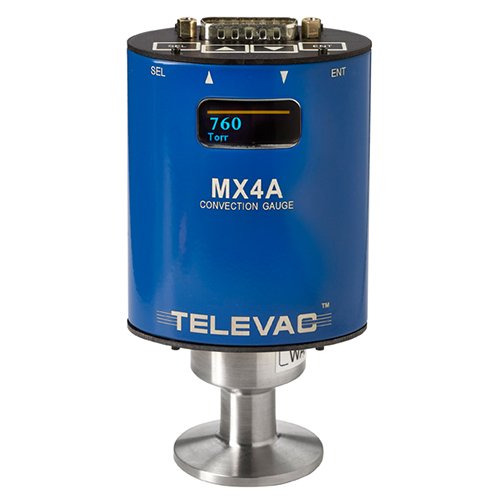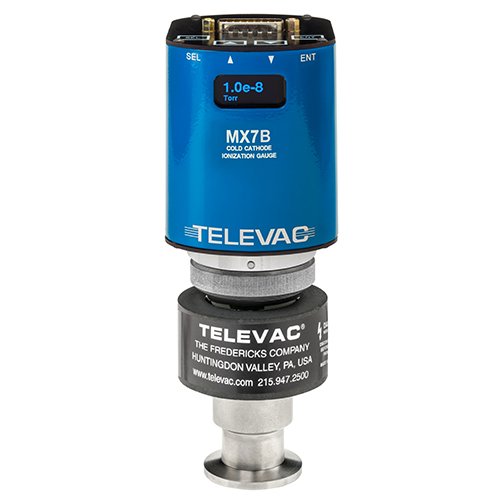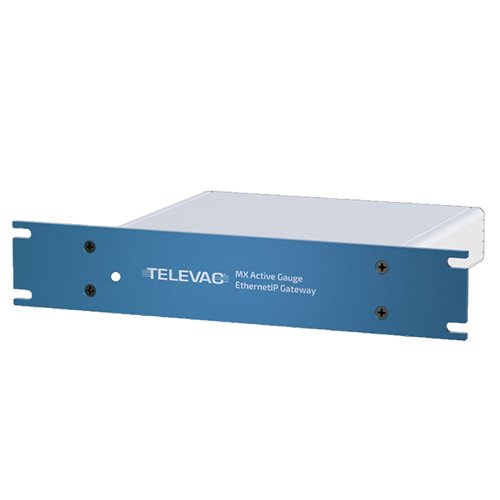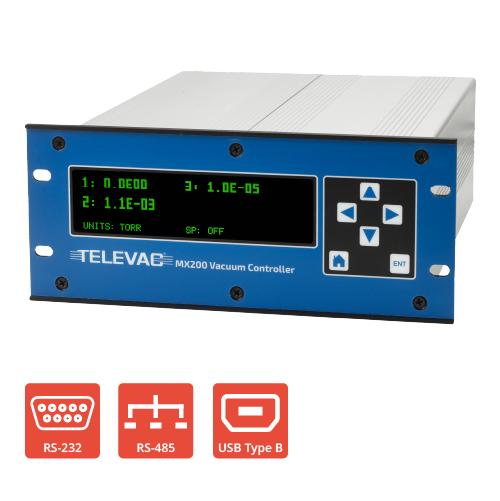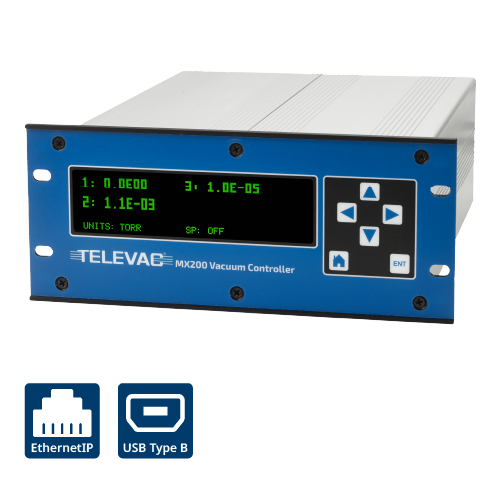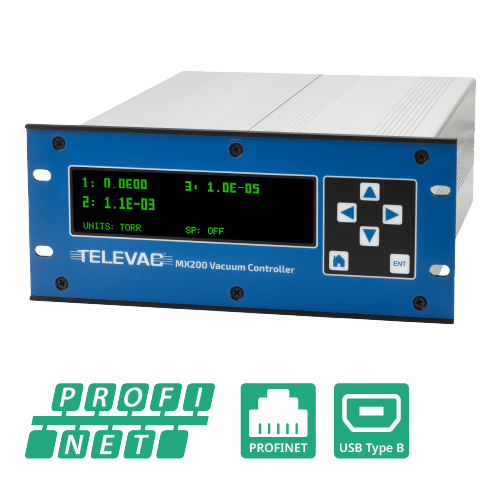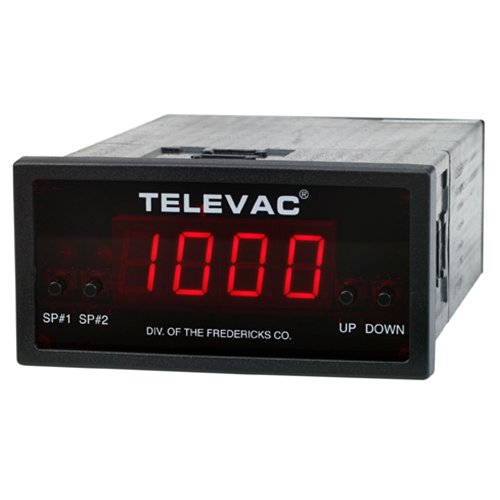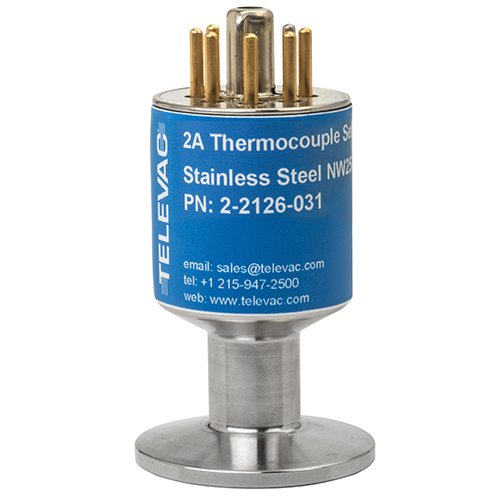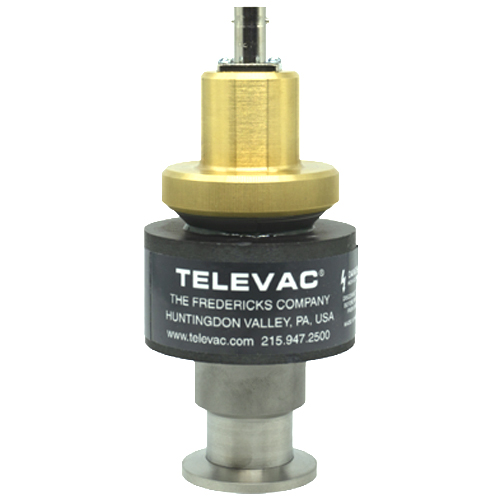E-beam welding is a process where a high energy beam of electrons from an electron gun is accelerated and focused using electric and magnetic fields, and shot at two materials to join them. The kinetic energy of the electrons creates very high heat which melts the two materials together (electrons are particles with a very small mass, 9*10-31 kg or 2*10-30 lbs to be exact). The electron beam requires that the system be under vacuum to maintain the speed and focus of the electrons thus preventing beam dissipation or scattering (without vacuum, the electrons would run into other molecules in the atmosphere like nitrogen, oxygen, and water vapor, among others). This is where Televac® vacuum gauging comes in, to make sure that the system is under sufficient vacuum to operate correctly.
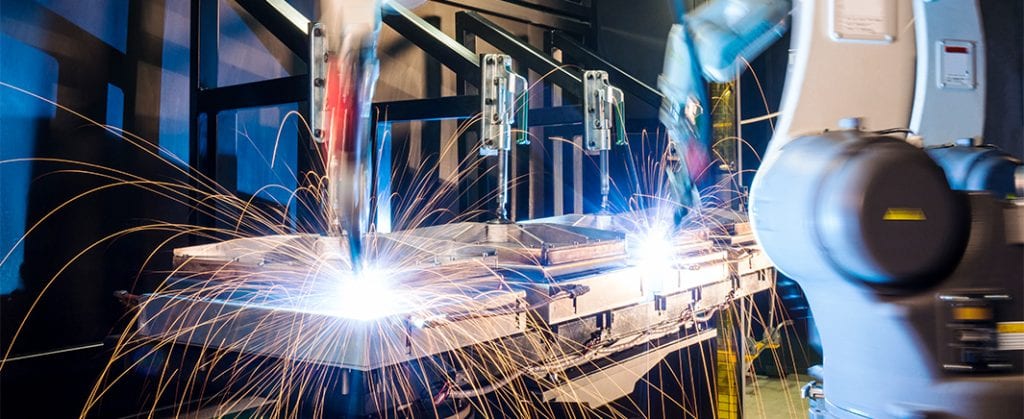
Il existe deux spécifications AMS pertinentes en ce qui concerne le soudage par faisceau d'électrons, AMS 2680 et AMS 2681. Elles prévoient deux niveaux de vide différents, respectivement de 1*10-4 Torr et de 1*10-3 Torr. Notez qu'il s'agit de spécifications aérospatiales. En fonction du niveau de vide et des exigences de précision du système, il existe quelques options pour la jauge à vide Televac, avec des différences importantes notées ci-dessous.
The first option is an active gauge solution. With an active gauge, the control electronics are attached directly to the physical sensor, then there are optional outputs to show the vacuum level including an analog 0 to 10 V output, RS-485 communications, EthernetIP, or PROFINET communications. The active gauges that would be used for E-Beam welding are an MX2A or MX4A (thermocouple vacuum gauges) for measurement from 1000 Torr down to 1*10-3 Torr and then an MX7B (cold cathode vacuum gauge) for measurement from 1*10-3 Torr and deeper vacuum (as low as 1*10-8 Torr).
The second option is to separate the control electronics from the physical sensor. This can be ideal if you need or want a remote display somewhere else on your E-Beam welder. The ideal solutions for this are the MV2A and 2A sensor if you only need measurement down to 1*10-3 Torr, or the MX200 with a 2A/4A (again for rough vacuum measurement down to 1*10-3 Torr) combined with a 7B or 7E for medium and high vacuum measurement (down to as low as 1*10-8 Torr). Depending on which controller you choose (MV2A or MX200), you’ll have optional outputs of an analog 0 to 5 V signal, an analog 0 to 10 V signal, RS-232 communications, RS-485 communications, EthernetIP, or PROFINET communications.
Vous ne savez pas ce que sont les unités ? Ne le soyez pas ! Voici quelques conversions simples du Torr vers d'autres unités de mesure courantes (pour plus de conversions, consultez notre convertisseur d'unités) :
1 Torr = 1,33 mbar
1 Torr = 1 mm Hg
1 Torr = 1,33 * 10-1 kPa
Not sure which product to choose? Use our Product Selection Guide, contact us online, call us at +1 215 947 2500, or chat with us using the window located at the bottom right of this screen!
Notez que le soudage par faisceau électronique peut également être effectué sous atmosphère. Comme le faisceau se dissipe lorsqu'il frappe les différentes molécules/gaz dans l'atmosphère, les soudures sont généralement plus larges, ce qui peut ne pas convenir à certaines applications.
Active Vacuum Gauge Solutions
MX2A Thermocouple (Pirani)
1*10-4 Torr to 1000 Torr
MX4A Convection (Pirani)
1*10-4 Torr to 1000 Torr
MX7B Cold Cathode
1*10-8 Torr to 1*10-3 Torr
MX Active Gauge EthernetIP Gateway
5*10-11 Torr to 10,000 Torr
Vacuum Controller Solutions
MX200
1*10-11 Torr to 10,000 Torr
MX200 EthernetIP
1*10-11 Torr to 10,000 Torr
MX200 PROFINET
1*10-11 Torr to 10,000 Torr
MV2A
1*10-3 Torr to 20 Torr
2A Thermocouple (Pirani)
1*10-3 Torr to 20 Torr
4A Convection (Pirani)
1*10-4 Torr to 1000 Torr
7B Penning Magnetron Cold Cathode
1*10-7 Torr to 1*10-3 Torr
7E Double Inverted Magnetron Cold Cathode
1*10-8 Torr to 1*10-2 Torr







